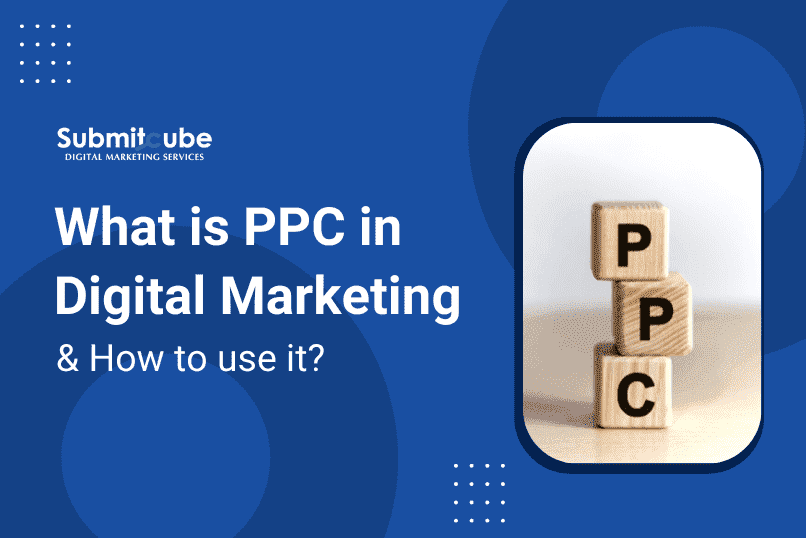
Over 80% of internet users use the Internet to search for information, read reviews, and purchase products. Your business must be easy to find online, and without exposure to other search engines, your business could become inactive.
You can use many strategies to help your business dominate online. Most commonly used techniques include SEO (search engine optimization) and PPC (pay-per-click advertising).
This article aims to help you understand how consistent investment in PPC in digital marketing can facilitate long-term organic growth.
PPC, or Pay Per Click Advertising, has become the foundation of digital marketing. Hubspot reports that 39% of internet users are inclined to click on sponsored ads. They either have an interest in the product already, or the ad has helped spark an interest in a product they didn't know existed.
PPC is a popular channel for digital marketers. Multimedia reports and tools determine where and how much budget should be allocated. That is an important task that must not be taken lightly.
Even the slightest miscalculations can harm a campaign when a PPC specialist has real money. Marketing budgets can be ruined if funds are not adequately monitored.
Start small and test your budget before moving on to larger marketing budgets. If the brand achieves the desired position through the pilot campaign results, you can increase the number of funds available to the campaign over time.
Google AdWords is the most popular PPC platform. Google AdWords is a Google platform that allows businesses and brands to make their products and services visible to their target audience. It is easy to place the link on pre-designated screen positions available during relevant searches.
Google Ads can help you get the word out, increase traffic, and ensure that your ads appear for relevant keywords. Higher conversion rates are typical for ads that appear in the top spots or on the sides.
Your company's goals will determine whether you use specific keywords, general keywords, or combinations. Long-tail keywords can also be used to target your market.
Google AdWords pays per click to advertise keywords relevant to your geographical location. Geo-targeting can be used to target businesses that are open during certain hours. Businesses operating from specific areas may also benefit from this.
You can use the Google Keyword Planner tool to help you find the most relevant keywords for your brand. You can enter a list of terms you wish to appear in the keywords.
Google will present a list with keywords you can search by clicking on "Search." You will also see the keyword's competition. There are three types of parameters available: global monthly searches, local monthly searches, and approximate CPC.
Your ads should not appear in irrelevant search results, and you must, therefore, constantly update your list of negative keywords.
To ensure you don't waste money, prune specific keywords from your campaigns. That will ensure your ad does not appear in search results for these keywords.
Once you have selected the keywords, use our traffic estimator tool to determine the budget and CPC to get the best PPC results.
You will need to enter your keywords in the traffic estimator to get estimates.
The estimator will display the estimated number of clicks for different price points in the form of graphs. The estimator will show you daily estimates of impressions and clicks and the average position for your ad. You will see the middle position of your ad on the SERPs.
Positions 1-8 are generally on the first page. Your bid and quality score can help you improve your position.
That is not all.
The CTR (click-through rate) of your ad will be displayed. That refers to how many people viewed it on search engines and clicked on it.
When you arrive on the Google Ads platform, the first thing you need to do is create an account for your brand. It would help if you chose the campaign type you want to run. There are many types of campaigns that Google offers under its PPC in digital marketing:
After you have chosen the campaign type you want to run, you will need to decide the language your ad will be displayed in. Select the geographical locations where your business operates.
These two steps are crucial in optimizing your ad and making it highly targeted to your potential customers and audience.
Next, you need to customize your campaigns for the devices you want to target. Google's PPC for digital marketing lets you customize your campaigns for mobile, tablet, laptop, and desktop devices. That allows your brand to reach a more niche audience.
You can also target different networks, such as Search Partners or Google Search, Display Network, and other places your ads should feature. If you select Default campaigns settings, this will not be possible. You can customize your settings to suit your business's preferences and requirements.
Your campaign's last task is to choose the bidding option. The following parameters are generally the basis of bidding:
You also have to decide on the type of bidding strategy you want.
Submitcube team of marketers can help businesses to understand why PPC marketing is important for boosting business success. Brands can expand online with our paid marketing strategies that take advantage of many search engine management strategies.
For more information on PPC and PPC advertising services, contact us.